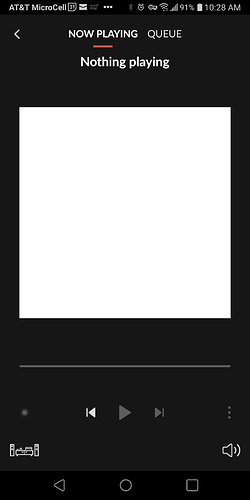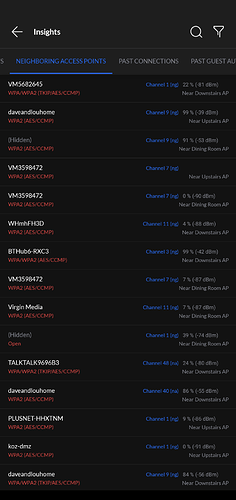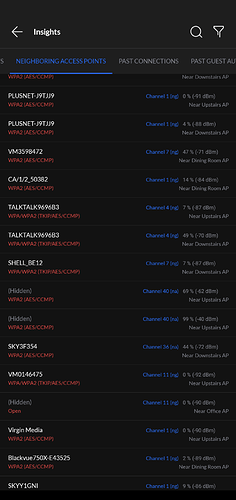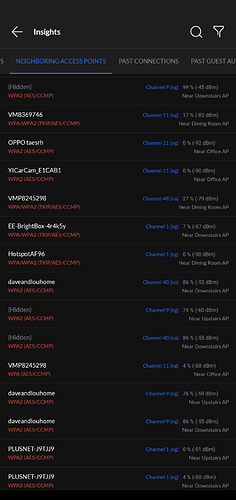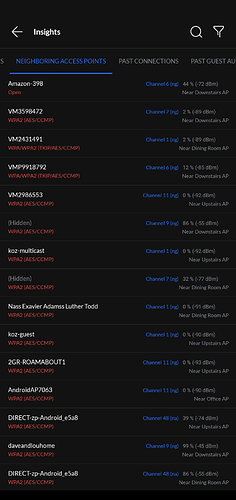I understand, but if than ungrouped endpoint is told it can go async, it can allocate the biggest practicable buffer without worries about being out of sync with other endpoints.
Here’s a really nice user guide article Roon Done Right: A User Guide, Part Two by @David_Snyder
I’ve had/have problems with Roon. I agree with most of what David said, especially the wired network. But I also think one of the commenters has a point: “You put this the wrong way. One should read “…the disastrous way in which Roon developers understand and implement all things network is the root cause…” Though I agree that there are as many network configurations as users, you will find nowhere else as many problems. Keep in mind that most of the same networks run Audirvana and/or Plex and/or JRiver and/or Emby and/or Netflix and so on, none of them known to be such a network unfriendly application.”
I have a wired connections for my Core and Outputs, Wi-Fi 6 APs and devices, and a 500/500 Mbps fiber connection with no bufferbloat thanks to my optimized firewall. And yet I still have problems with the remote apps on my iPhone, iPad, and Macs. For example, I don’t know why every time I hit Home, I get the annoying squid to refresh everything. Or when playing one of the daily playlist, I open another app, then go back to Roon, I get an “Error loading saved page”. This on top of Roon already using a lot of resources on the devices. Why is it that the needed elements for a smooth user experience not already cached in the devices?
Hi @Arthur_Gonzales . Thanks for your kind words.
On the surface, it can be a bit confusing why 4k streaming from Netflix and Plex works fine, sometimes even over Wi-Fi, but Roon can be unreliable. There are a few important differences though:
- Netflix, Amazon, and the native TIDAL and Qobuz apps stream directly from the Internet to the endpoint device. They generally don’t communicate much with other devices on the same local area network…only the Internet…
- Other applications, like Plex, tend to use large buffers, which adds latency and can be a bit wasteful, but helps carry them over brief drops.
- Mobile apps for these services stay active (if they can) when the device sleeps. Roon Remote intentionally does not, so it has to boot up, find Core, and re-connect. Depending on how power conservation is implemented on the mobile device, it may take a few tries for Roon Remote to re-establish the connection as Wi-Fi wakes up.
- Unlike other audio protocols, R.A.A.T. streams uncompressed digital audio data to endpoints, so it generally uses more bandwidth than DLNA, AirPlay, etc.
- I have not seen the “Error loading saved page” message in a long time, but that’s definitely a bug, as is the white screen I see when my queue is finished playing. I understand that this issue is being worked on and may be fixed soon.
The short answer is that Roon makes more use of your local area network for inter-device communication than pretty much any other application you use. Folks who have a robust network almost never see problems, but if there are weaknesses in a network’s design or deployment, Roon is more likely than other applications to be affected.
Large buffers do not necessarily add latency. Somewhere in the mountains far away from me there is a huge reservoir full of water. I don’t have to wait a week when I turn on the tap! Buffers can be filled while music is playing. Just watch the Qobuz app read ahead 20 minutes or more within the first minute of playback.
I agree, I went to wireless mesh devices about 5 years ago when I started running into issues with wireless online gaming and it fixed the issue immediately…
Yes, but if playback starts with little or no data in the buffer, you have a bigger chance of a glitch.
(The water analogy doesn’t work here, since water doesn’t have timing requirements. In case of audio, you do want the water in the tank when you turn on the tap, not just any water that happens to be in the pipes already.)
As @Geoff_Coupe noted earlier in the thread, the design goals for RAAT demand a much tighter synchronization between server and endpoints than all those other streaming apps (Plex, Spotify, …) that have been mentioned. Those design goals were chosen to support a specific feature set, and impose certain requirements on the network. Other apps have different goals, so they impose different requirements. One should choose the app that works in one’s network, rather than dealing with the frustration of app requirements that one’s network cannot really meet.
When I started using Roon I looked at those docs carefully and they matched what I was looking for. I had previously many bad experiences with WiFi-based streaming with other apps, so I had committed to wired for everything anyway, to the point of repurposing the TV coax in this home (who cares about cable TV anyway  ) to simulate Ethernet via MoCA.
) to simulate Ethernet via MoCA.
I saw an article recently, Guardian I think but I can’t find it, on the theme that you have a 1000 pound phone and a 2000 pound laptop and use them with a wifi router you got for free ten years ago when you signed up to BT.
I’m not sure how common this is. But I resist all this talk by the techno wizard who say they have “built” a super wifi system. I haven’t. I have bought a super wifi system that has no trouble with Roon or anything else, just like I have bought my phone and computer. And car, and dishwasher. I actually had a supercomputer I had built, and it died this weekend, and I had no interest in troubleshooting the hodgepodge and bought a new computer.
I keep repeating, I have run Roon all wifi for years with no problems. Virtually all my music is streamed these days, most of it is hifi. So either Good WiFi ™ is ok for Roon, or I have sold my soul to the devil. Your guess.
LOL. Well done! Roon requires a robust local area network, however you implement it. The odds of pulling it off with Wi-Fi alone are low, but it sounds like you’ve figured it out.
This one: TechScape: could a router revolution solve all your wifi woes? | Technology | The Guardian
I too use MoCA with very good results. BTW, MoCA and either OTA or cable TV coexist quite nicely on the same piece of coax cable should you ever want to watch TV….
Sadly the opposite is also true. The use of current state WiFi and old client devices. All the fancy high speed numbers the marketing department has put on the shiny new access point / router are only achievable with new devices that also support the current state of WiFi technology. If people insist on connecting old devices to new access points often means that the access point has to switch back to older WiFi standards to support those older devices – the high speed numbers and maybe other benefits too that come with newer WiFi standards are then no longer usable.
So for stationery devices like TVs, HiFi streamers and the likes, as you can’t update the built-in WiFi and you might not want to replace it as it’s still doing its job, if it has a network socket too it’s often best to wire them to an access point (that supports current WiFi standards) in bridge mode or special WiFi bridges. Also mesh points often have network sockets to use for just that – add a switch if you need more ports than available on the device directly.
It may also be that such older devices have issues in combination with newer WiFi access points even when run in “compatibility mode”. We for example had an older tablet in use that made the access point refusing connections after 3 - 7 days, forcing me to restart it. Since that tablet got replaced, the WiFi network can run uninterrupted for months now.
Thanks for the reply, David. I think I understand how Roon works. And your article clarified a couple of points as well.
I have had no problems with playback since I had my endpoints wired. And I’m not talking about buffers and drops, although I have had those problems before. I wish the Remote Control app was better. Why does it have to reload the stuff below the “Recent activity” every single time you navigate away from Home and then back again? I wonder what design goals were chosen for this. And it doesn’t matter if the device is wired or wireless, it’s just slower on wifi. This, coupled with some problems playing to wifi endpoints, makes the experience sometimes very frustrating.
If I remember your not exactly in a large urban built up area which will make your chances of it being fine much greater.
The Roon remote apps on iOS and Android use quite a bit of memory to provide their spiffy visuals. The negative side of that is that they are quickly kicked out of memory if backgrounded to free memory for the new foreground app(s), so when they are called back, they have to rebuild their state from storage.
For those that don’t really understand how WiFi works or why you get problems this simple guide gives you clear answers.
And here is my system detecting all WiFi access points near me. I am in a suburb of London, This is just 4 pages there is more quite astonishing it works at all given the limited channels we have. All these take their toll on everyone’s WiFi in my area.
Are your devices and router running on 5GHz? The 2.4GHz band is very crowded as many early ISP modem+routers used 2.4GHz-only chipsets to save money. That plus it’s already not a very wide band and subject to microwaves and other industrial products that operates in that band. As of today 5GHz band comes by default in almost all routers. You should be able to find in your router setting how to separately assign a WiFi name to the 5GHz link. (I named it *_5GHz in both my home and my office) Running solely on 5GHz (and never allow the devices & router to “automatically select bands”) might solve your problem. 
My Aver V5 and my Fritzbox 7430 router can do 2.4 and 5 GHz. I only experience interference in the 5 GHz band and with redirection to the old band, the more stable connection comes into play. It is certainly different in every situation and unbeaten on cable.
Interesting. 5GHz indeed is less capable of penetrating solid walls. I guess it does depends on the construct of the apartments or houses.
